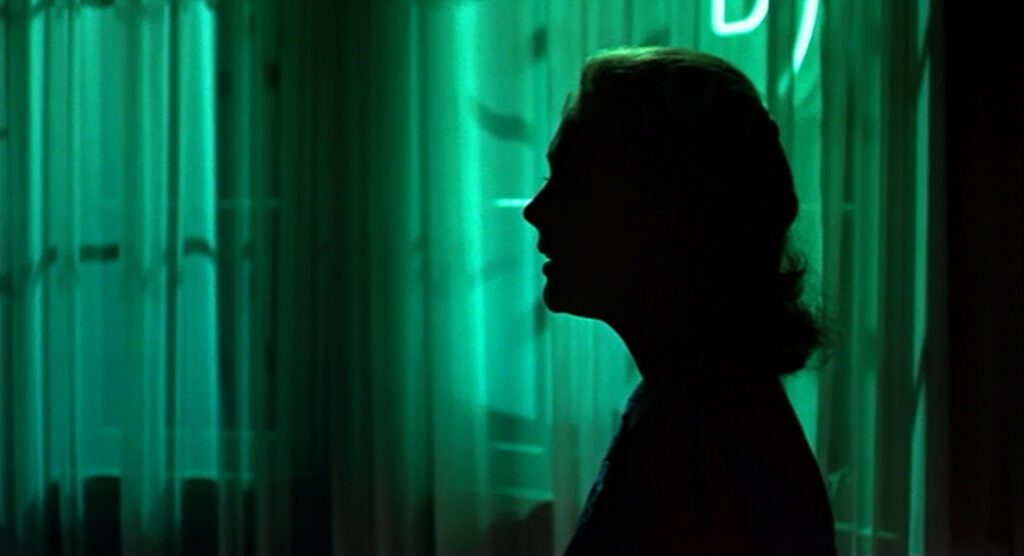
THE HYPOTHESIS OF THE MISSING HITCHCOCK
(c) Daniel R. Kieckhefer, December 2023
In Raúl Ruiz’s film The Hypothesis of the Stolen Painting, an art collector traces hidden connections in a series of six paintings to argue that there must be a missing seventh. A ray of light, a pointed hand, the direction of a glance, a glowing orb – all are clues to a secret logic uniting the diverse canvases, but the chain of links is interrupted in the middle. Ruiz’s film spins a tantalizing mystery, though we know the paintings and the artist are fictional. How much more tantalizing it would be then if the story were true, and if, instead of an obscure late 19th century disciple of Gérôme, it concerned the most celebrated filmmaker of the 20th century. As unlikely as it sounds, the signs in Alfred Hitchcock’s movies point to an unknown film from the height of his career that must certainly exist.
Let us start with The Lady Vanishes. Not only will it launch our journey by introducing the subject of Hitchcock’s missing film, it will also establish how devious Hitchcock was. Everyone who met him knew he was a practical joker, which will prove important when we come to the heart of our mystery. Even the final shot of The Lady Vanishes is a joke. Miss Froy fades to black, vanishing before our eyes, opening a tiny doubt as to what the movie’s title might actually refer to. Everyone notices that she vanishes from the train compartment while Iris sleeps, but that’s only one of fourteen times she vanishes. She disappears from the hotel in a gust of wind; she’s gone in a flash when the hotel manager walks by; she escapes behind a ridge in the forest; and her name fades from the train window. None of these, of course, gives the movie its title; in fact Miss Froy is not the lady whose vanishing Hitchcock meant. That would be the protagonist Iris, whose name is a cinematic device for making a character vanish, wrapped in a circle of darkness. It’s not Iris herself who vanishes, but her ladyhood, if we recall that she was engaged to a Lord Charles Fatheringale before the commoner Gilbert wins her heart. She won’t become a lady after all.
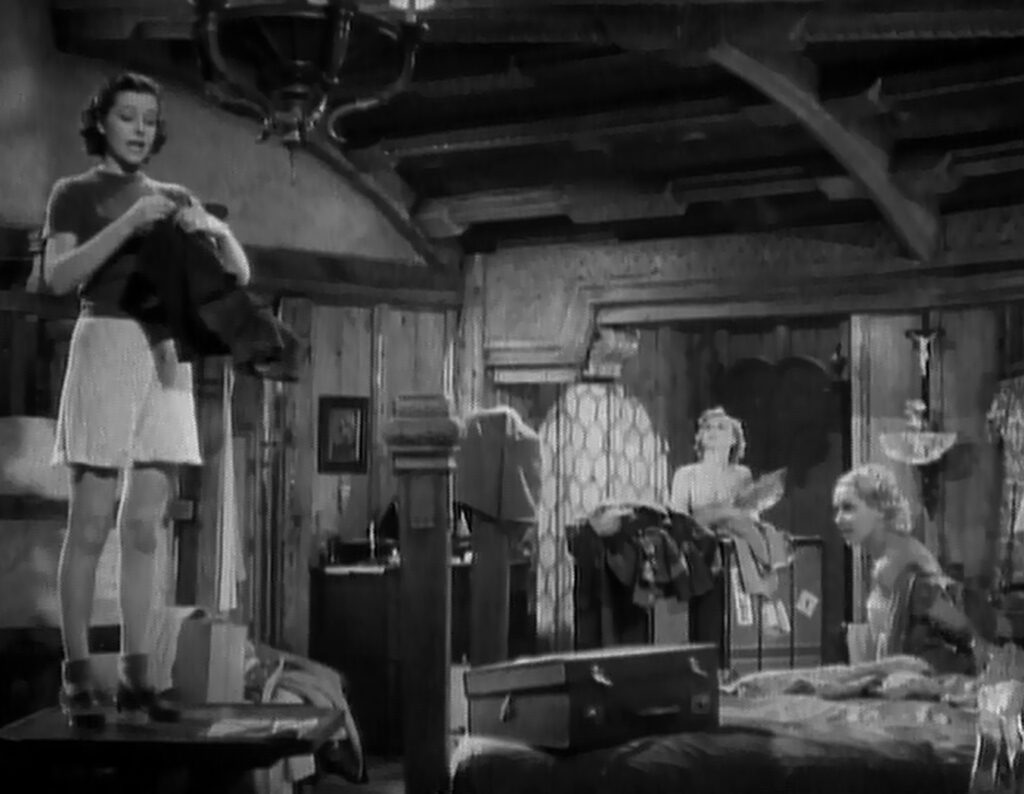
The Lady Vanishes is not just another story about a young woman who trades aristocracy for love. When Miss Froy introduces herself, Iris mishears her name as “Freud”. Later on, Spellbound and Marnie will confirm Hitchcock’s Freudian outlook, but for now it’s enough to say that the psychological implications of Iris’s change of heart outweigh any class commentary. The name “Fatheringale” is anything but neutral, and in giving up her ladyship Iris forgoes the exalted status of being a little girl in her daddy’s arms. She’s ready for a mature relationship, and whatever Gilbert’s childlike qualities may be, his avowed respect for his father marks him as grown up. One of the surest hallmarks of an oedipal male is a hatred toward the original rival for his mother’s affection.
A similar story lies beneath the surface of Shadow of a Doubt. Again the protagonist is a woman on the cusp of adulthood, and again she’s introduced with a hint of incestuous longing, fantasizing about her uncle. Again the young woman’s quasi-elektral desire translates into a wish to rise above the ordinary. Charlie is bored, hungry for excitement, but by the end she’ll come to appreciate the virtues of everyday life in Santa Rosa. Meanwhile her Uncle Charlie reciprocates her crush, giving her an emerald ring with a power like the one in Tolkien’s saga. It changes hands three times between the two Charlies, and whoever holds it will hold the upper hand in the relationship. A ring is a symbol of marriage, and it pushes the boundaries of appropriateness between uncle and niece, but by the end it points to Charlie’s readiness for a more adult relationship, possibly with the detective.
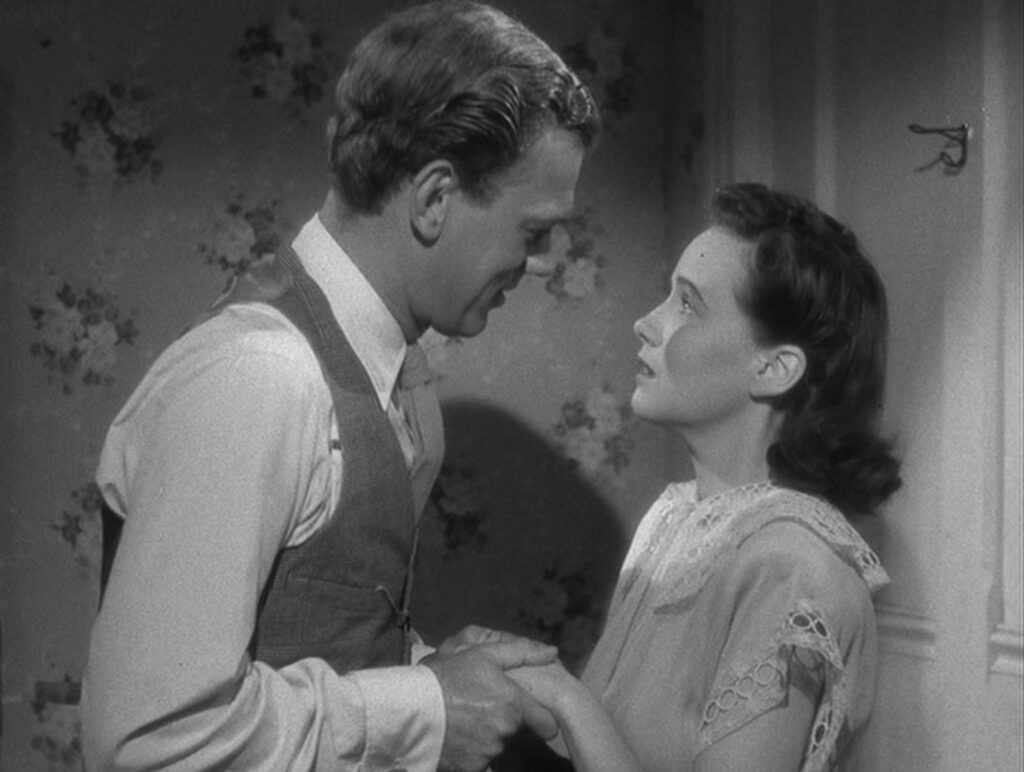
The same story recurs once more in Strangers on a Train, this time with Hitchcock’s daughter Patricia playing the young woman. Her banter with her sister’s fiancé is ever so slightly flirtatious, giving just a whiff of intra-family taboo, but like the younger Charlie before, her affections turn to a detective. When she brushes powder off of Hennessey’s crotch at the tennis stadium she signals her readiness for adult sexuality. This however is only a side plot, and Hitchcock had more important business to attend to.
Until now, in 1951, Hitchcock had been playing it safe. All his allusions to incest had been subtle enough to evade much attention and palatable enough not to alienate audiences. When he had made Spellbound in 1945 to popularize Freudian theory, he stuck to dream analysis and repressed memories, avoiding Freud’s theories of sexuality except in a throw-away line about a policeman’s chief calling him a “mama’s boy”. In Rebecca there’s a report of a love affair between cousins, and Mrs. Danvers tricks Joan Fontaine’s character into dressing up as her husband’s distant ancestor. In Notorious, Claude Rains plays a villain with an oedipal attachment to his elderly mother, but the movie doesn’t foreground it the way Strangers on a Train does. Bruno Antony’s bond with his mother and hatred for his father absolutely drive the plot. Audiences can easily forget Farley Granger’s character, but Robert Walker’s portrait of a sexually disturbed murderer lingers on. When Guy sneaks into the house to warn Bruno’s father, Bruno surprises him in his father’s bed, symbolically usurping the reserved place at his mother’s side.
Now we can begin to detect Hitchcock’s true feelings toward incest. In Freudian theory, and in works of literature going back to ancient Greek drama, it’s understood that a child’s bond to the parent of the opposite sex is a template for adult sexuality, and that this closeness is a normal phase of development. It only becomes problematic when the child grows up without growing out of the oedipal or elektral attachment. An adult who still harbors a childlike obsession with the favorite parent becomes dangerous, as Bruno Antony illustrates so well. In short, Hitchcock evidently felt that the gravest threats to society – from common disorder to violent crime to the pull of fascism – stem from juvenile sexuality.
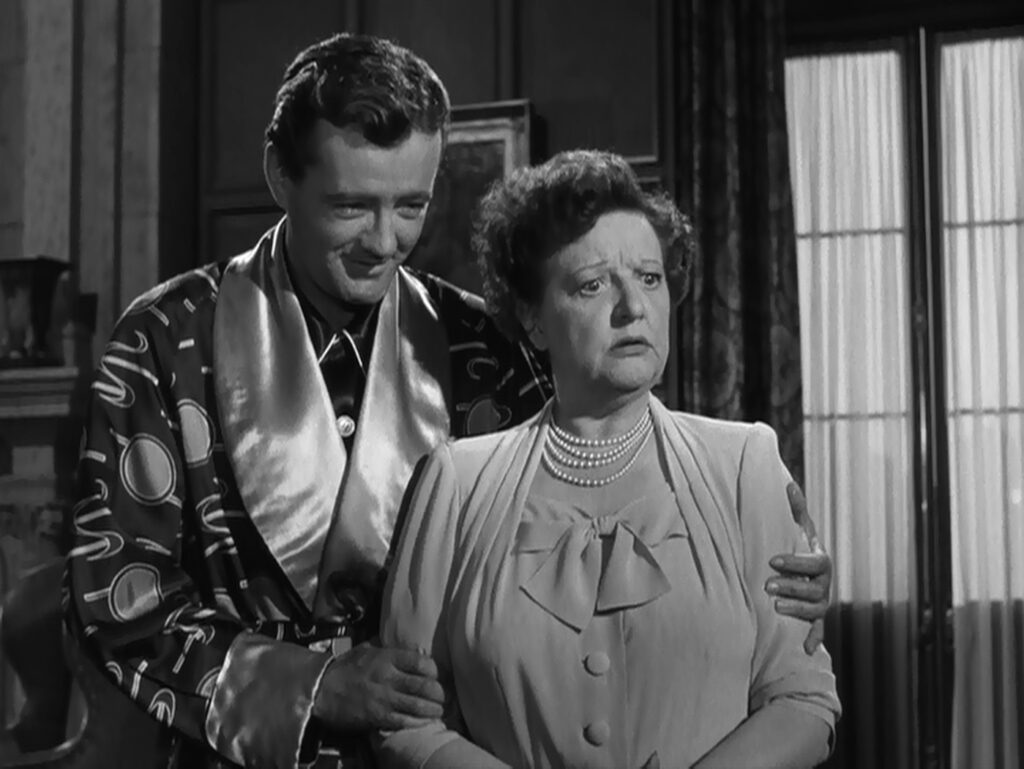
Strangers on a Train is the turning point in Hitchcock’s career. It resurrected him in the public eye after a string of unpopular films, and it’s his first time coming so open with the dark side of Freudian psychology. It also represents a shift of emphasis from the Elektra complex to Oedipus, doubtless reflecting a social reality that oedipal males pose a greater danger than daddy’s girls. In the examples we’ve looked at, Hitchcock’s female characters trace a healthy path of development, growing out of their childhood longings, but his oedipal males will usually get stuck in their psychological past, and Hitchcock is far from sympathetic toward them. They grow into self-absorbed men who behave possessively toward women and treat the older generation with contempt. Critics tend to emphasize Hitchcock’s mastery of suspense, and he was certainly popular with audiences, but he was also less ingratiating than most comparably popular directors. In retrospect, his best films read as warnings. In the 1930s, long before the English were convinced of Hitler’s intentions, Hitchcock’s spy movies warned Britain against forces brewing on the continent, and after the war he turned his attention to the psychological threats bubbling under the surface of what appears to be civilized society in England and America.
As effective as it was, there was still a problem with Strangers on a Train. In a sense it was too effective. Bruno Antony is a memorable villain, but if Hitchcock was right about the dangers of sexual immaturity – if it’s really such a common problem – then he needed to place the threat in everyday life where it hides so well. Bruno was too much of an outlier, a psychological freak. Hitchcock’s next oedipal character needed to project a wholesome ordinariness, and he found his man in Jimmy Stewart.
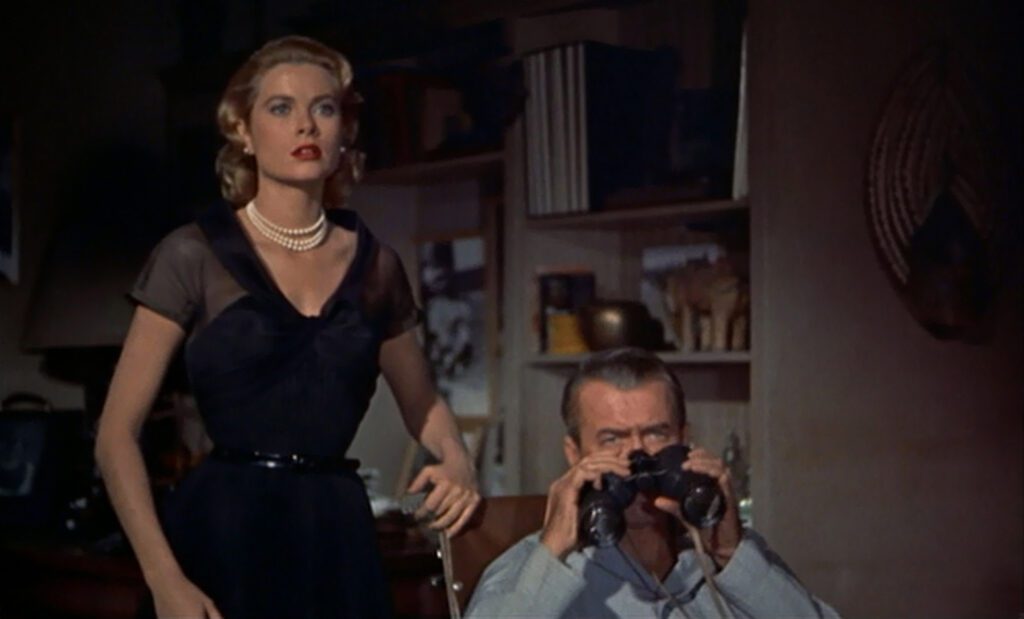
Rear Window is outwardly a murder mystery, but the arc of its story tells how an aging bachelor comes to accept the idea of marriage. Grace Kelly’s character is introduced in a negative photograph, and Stewart spends his days peering into his neighbors’ windows to find reasons to avoid marriage. There’s a sexually exhausted newlywed to his left, needy spinsters on the ground floor, a ballerina who reminds him of the joys of single life, and a bickering middle-aged couple directly across from him. He seizes on the latter, making a villain out of the old man before there’s any evidence, dragging his girlfriend, housekeeper, and war buddy into his childish conceit. He’s just as hungry for excitement as Charlie in Shadow of a Doubt, and his professional life is like a child’s fantasy of action and adventure. He’s a boy in a man’s body, and the title Rear Window describes the backward view of a man looking into the past. In his cameo Hitchcock winds a clock counter-clockwise. Like the elektral characters in Hitchcock’s earlier movies, the protagonist grows out of his immaturity, but this happy ending does not do justice to the real dangers of oedipal personalities. Hitchcock has not yet made his point with full force.
At last, in Psycho, Hitchcock’s antipathy toward the oedipal man-child is unmistakable. No one could miss Norman Bates’s obsession with his mother; he’s a classic case of oedipal psychopathology. The Victorian house looming over the motel stands for the childhood memory that Norman retreats into at will. His bedroom is full of toys, and he serves Marion milk and sandwiches. In the motel’s office are pictures of couples separated by vast age differences, like Venus and Cupid or Susannah and the Elder. Like a young boy enraptured by his mother’s affection, his motives are sexual, but they find outlet in a desire to possess and control. He behaves prudishly toward Marion, then he kills her. The name “Norman” is suggestively close to the word “normal”, and that’s the point. Hitchcock would hardly continue to harp on the topic of incest if it were only relevant to extreme cases. He must have felt that Norman Bates represented the demons of incest that govern so many adults in the modern world.
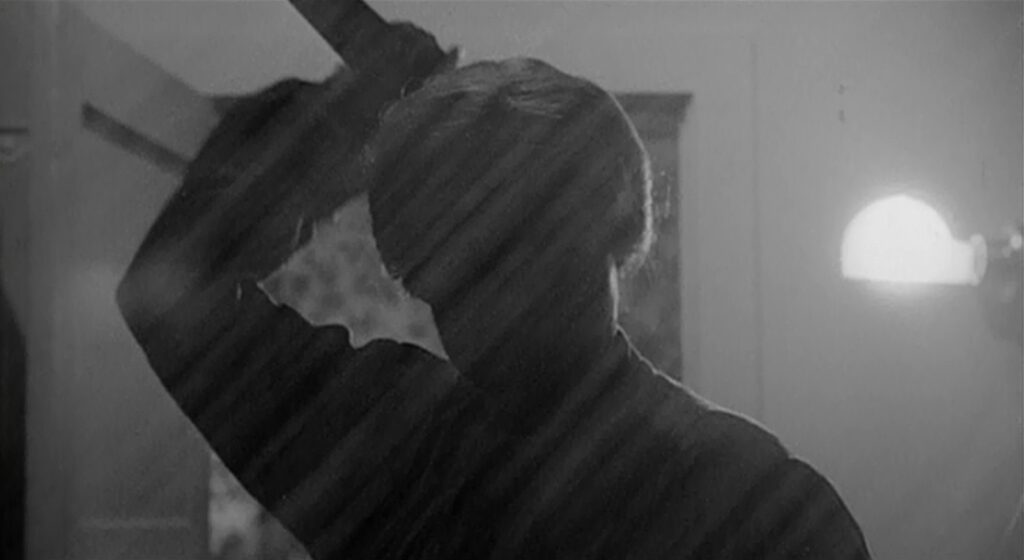
Still, Hitchcock must have been capable of making his point better. Psycho makes it plainly enough, but a great director knows it’s important to give the audience room to reach their own conclusions. Norman Bates’ incest is too unambiguous. Furthermore, despite Norman’s name, he’s as much of a freak as Bruno Antony… in fact the two characters describe their mothers almost exactly the same way:
Bruno: “She’s a little… how shall I say… confused.”
Norman: “Mother… what is the phrase… she isn’t herself today.”
In other words, it’s curious that Psycho regresses nine years back to the level of Strangers on a Train, forgoing all the subtlety of Rear Window. It’s as if Hitchcock had become impatient with his audience, or at least with critics who hadn’t caught his meaning. If the misunderstanding goes back to Rear Window though, it would be quite a delayed reaction. There must be a movie somewhere between 1954 and 1960 that expresses what Hitchcock wished to convey about juvenile men, and the progression we’ve seen gives us reason to think that the missing film, if not Hitchcock’s masterpiece, is at least his most complete expression of an important idea. There are six known films in this gap, listed here chronologically:
- 1955 – To Catch a Thief
- 1955 – The Trouble with Harry
- 1956 – The Man Who Knew Too Much
- 1956 – The Wrong Man
- 1958 – Vertigo
- 1959 – North by Northwest
We can rule out the first four. Three are too light in tone, and The Wrong Man is too narrow in its scope. At any rate, if the summation of Hitchcock’s thinking were that early, it’s hard to believe his exasperation would spill out four or five years later in Psycho. Vertigo is an obvious candidate – it’s widely held to be Hitchcock’s most serious and accomplished film; its emotional landscape is deep; and it stars Jimmy Stewart, who would still be useful for the same reasons as in Rear Window. Nevertheless, Scottie Ferguson quite plainly dismisses any desire for a mother figure. He brushes Midge off for being too “motherly” and ignores her when she tries to mother him in the hospital (“Mother’s here.”) That leaves North by Northwest. Cary Grant is plausibly oedipal, and he gets into trouble three times… the first time he calls on his mother; the second time he needs help from his girlfriend Eve; and the third time he’s left to his own devices. It’s a classic tale of growing up, but pursuing that thread does not take us much deeper. In its way North by Northwest is as light in tone as Hitchcock’s comedies.
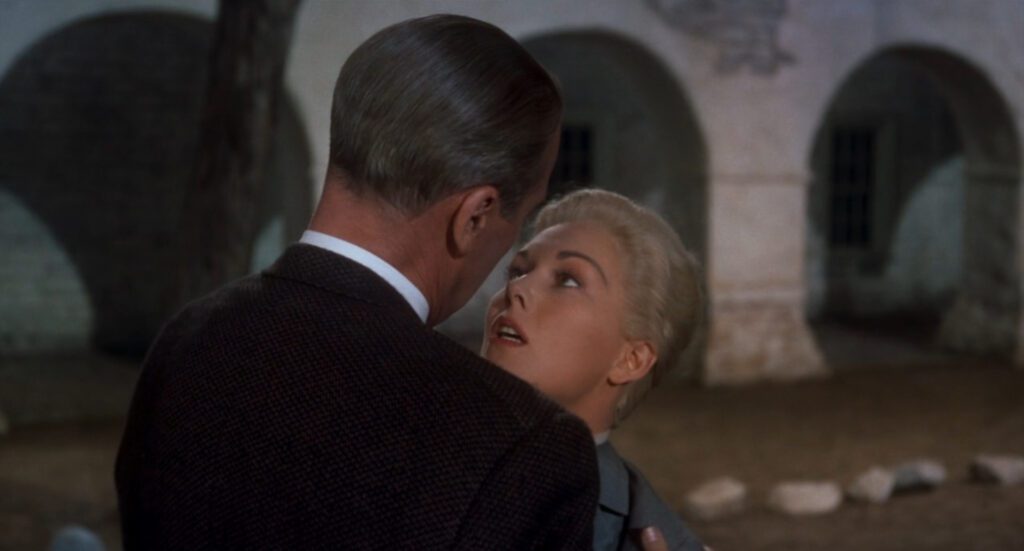
The prospect of finding a missing Hitchcock film seems hopeless. A director of his caliber could not make a movie anywhere close to Hollywood production standards without leaving a record of it. Here however if we recall what a trickster Hitchcock was, we might consider that the unseen film has been missing in plain sight all along. As you might already suspect, it was wrong to dismiss Vertigo so easily. Midge may have thrown viewers off the scent with her supposed motherliness, but if Scottie still had a thing for his mother, and Midge simply wasn’t enough like her, then their dialogue is exactly what you’d expect. Midge has known him since college – she knows exactly what he wants in a woman, and she’s trying her best to be like his mother.
Gavin Elster has known Scottie since college too, and when he asks him, “Do you believe that someone out of the past, someone dead, can enter and take possession of a living being?” we should be able to read a double meaning. “Someone out of the past” could just as well be Scottie’s mother, and Gavin has picked a woman who could play that part better than Midge. Her real name is Judy Barton, but Scottie will know her as Madeleine. (Midge’s real name Marjorie, by the way, also starts with “Ma”, but Scottie won’t call her that.) Scottie falls for Madeleine right off, and he follows her around and peeps on her like a little boy clinging to Mommy. She goes into a museum to stare at a painting of her purported great-grandmother, while Scottie watches from beside a painting of a small boy. Of course Midge already knows he’s a boy in a man’s body – she had to explain to him what a brassiere is, telling him “You’re a big boy now.” When Madeleine needs to shake Scottie off she goes into the McKittrick Hotel, an old Second Empire mansion like the house in Psycho. Hitchcock loved puns, and the hotel’s name parses into what happens there: ma + kid + trick.
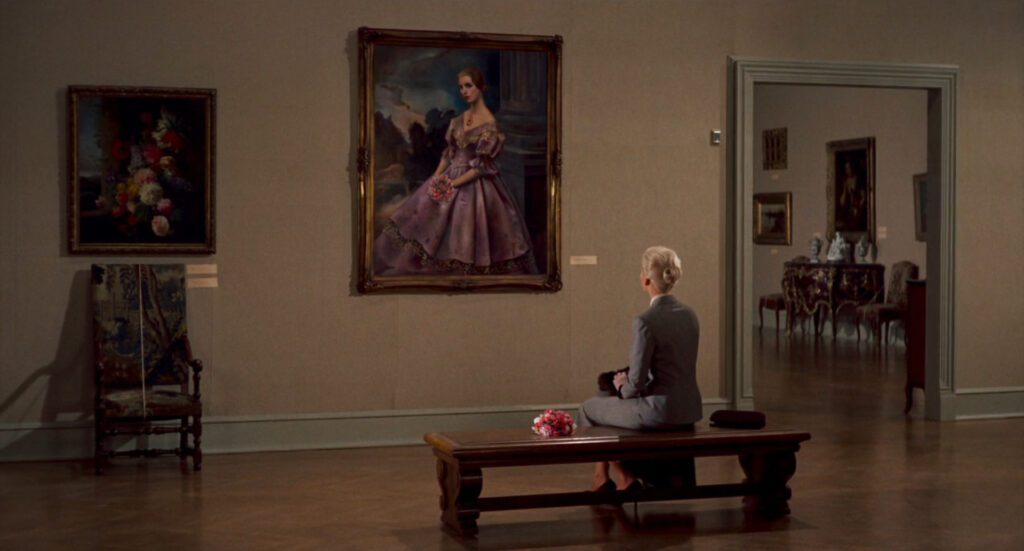
Everything in Vertigo has a double meaning. The first scene would be almost ridiculous without an ulterior purpose. Scottie and his gray-haired partner are too old to be chasing a young criminal across the San Francisco rooftops, and they run with the exaggerated movements of comic book action figures. There’s no way Scottie could hang onto a rain gutter long enough to get rescued, but that’s the point – the opening scene is the action fantasy of a man who still sees himself as a boy. The real fantasy, however, is the loss of a father figure – which leaves him free to pursue his mother, just like Norman Bates.
Vertigo is about a man living in the past, an idealized past when he had enjoyed his mother’s unabated love, and how he tries to drag another woman back into that past. When he drives Judy to the mission at the end he speaks of going “back into the past once more.” Apart from Midge’s modern studio and Scottie’s neutral home, most of the settings are antiquated, as if projecting the ideal past that Scottie dwells in – Gavin’s office and clubhouse, Ernie’s, Madeleine’s apartment building, Mission Dolores, San Juan Bautista, the art museum, the bookstore, and the redwood grove where “Madeleine” locates her past life in the tree rings. Following Gavin’s instructions, Madeleine is obsessed with the past, with a female ancestor, and Scottie likes that because they share that in common. When he loses Madeleine he looks for her in older women until he finds Judy.
Not only does Madeleine’s name point to her role in Scottie’s eyes (In Psycho, Marion also starts with “Ma” as does her alias in the guest register, “Marie Samuels”), but Scottie’s name also describes his part in Hitchcock’s argument. “Scottie” makes him sound boyish, and its closeness to scotch liquor recalls the amnesiac’s name John Ballantyne in Spellbound (Ballantine’s is a famous brand of scotch). Scottie Ferguson is a kind of amnesiac, unaware of the infantile longing driving him to harm Judy. The last syllable of Ferguson is a reminder that he remains a child, and “Fergus” alludes to the Celtic hero Fergus mac Róich whose wife tricked him off the king’s throne to install her son. “Gavin” fits Gawain from Arthurian legend, who in Wolfram von Eschenbach’s telling was a friend to the fool Parzifal who gets a “mother’s kiss” from the sorceress in Wagner’s opera Parsifal. In Scottie’s famous kiss with Judy, everyone associates Bernard Herrmann’s score with the theme from Wagner’s Tristan & Isolde, but Hitchcock was a big fan of Wagner and would have known that there’s a similar Tristan chord on the mother’s kiss in Parsifal.
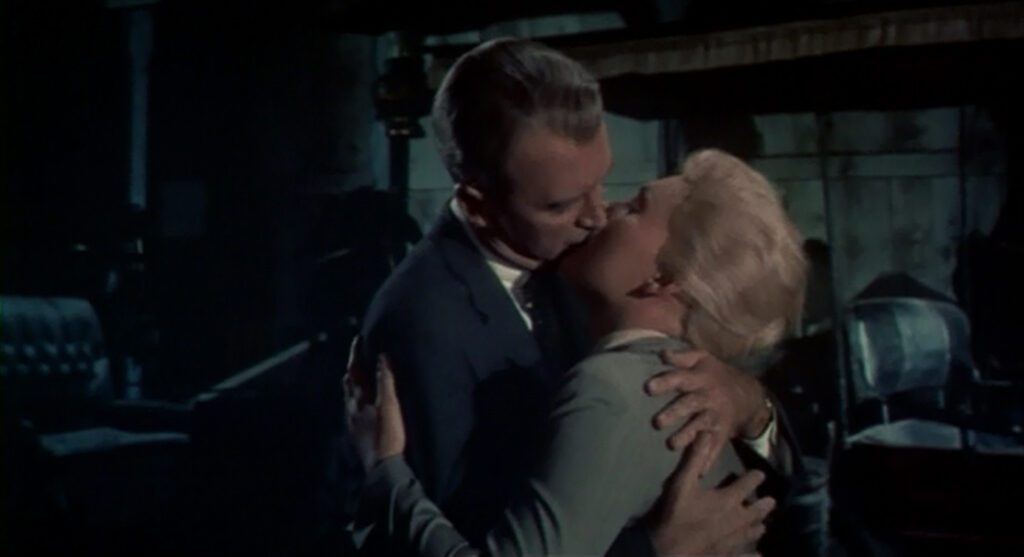
Now we have a clear motive for Psycho. A seasoned director knows that critics and audiences won’t respond to every film, but to dismiss an achievement like Vertigo must have stung. He couldn’t tell them why they were wrong, because that would admit failure. Instead he could remake the movie in such a way that no one would miss the point. Few critics appreciate how closely Psycho follows the blueprint of Vertigo – each movie starts with the rooftops of a western U.S. city then moves successively into a small modern apartment or hotel room, a ground-floor office, and a scene of driving (with a brief insert at Ernie’s restaurant in Vertigo). Each film shocks the viewer in the middle, unexpectedly disposing of a woman. We’ve already mentioned the “Ma” names, the old houses, and the recurring metaphors for the Past. The title of each movie points to a malady that plays a kind of MacGuffin: Scottie’s vertigo and Norman’s psychosis. In each film a need for money puts the woman in the path of her murderer, but her guilt is trivial compared to the man’s.
It’s not just that Vertigo and Psycho are both about incest. We can fully appreciate Vertigo only when we realize that Scottie’s incest makes him the equivalent of Norman Bates. He pushes a woman to her death for the same selfish and infantile reasons, and when he says “The color of your hair” we should understand that he’s a sick man. The difference in Vertigo is that we can recognize how common the distortion in his personality actually is.
CREDIT
Many of the insights in this essay come from my long-time friend & teacher Lawrence N. Fox.